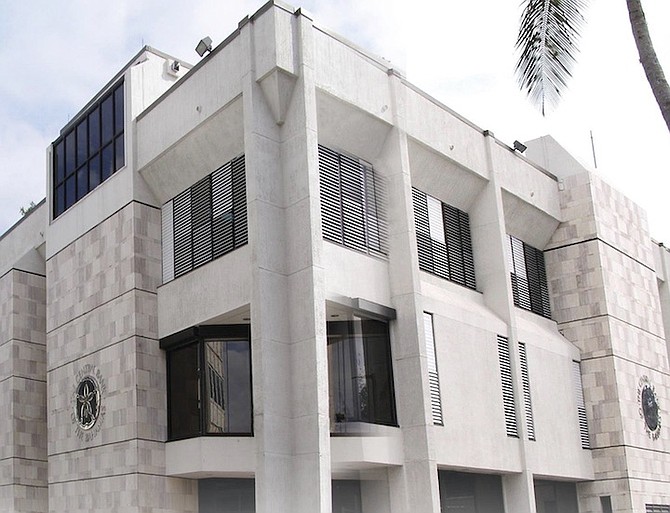By EARYEL BOWLEG
Tribune Staff Reporter
ebowleg@tribunemedia.net
A CENTRAL Bank official said the institution has plans to get the country’s commercial banks on board with the use of the digital Sand Dollar this year to increase uptake with the general public.
Brett Lashley, deputy manager of Central Bank’s Currency Department, made the comments while speaking at a Rotary of West Nassau meeting at Poop Deck Sandyport.
The Sand Dollar is a digital currency issued by the Central Bank.
“We realised that unless you have previously had a reason to interact with a Cash and Go, Omni... Kanoo - it’s inconvenient for you. It’s not something that you’d likely have as a priority to say, ‘Oh, let me go figure it out and onboard with one of these AFIs (authorised financial institutions)’,” he said yesterday.
“So our push this year is to get all the commercial banks on board. They are at various stages of readiness to deploy Sand Dollar but that is our goal for the short term. The very near term is to start rolling it out with the commercial banks. So you may see some little sooner than others, but we realise for the average person to engage with Sand Dollar it needs to be integrated with whatever commercial bank they are using.
“Obviously, going with the AFIs gave us an opportunity to address those communities that don’t have a commercial bank who Sand Dollars was really envisioned for but to really get that uptake, now we’re shifting our focus to retail banks.
“When we get to that stage of moving money from bank to bank via Sand Dollar, there’s quite a bit going on in the background to enable that to happen.”
He said there are about 100 merchants who have the capability to accept the Sand Dollar, but many are not doing so.
The issue is largely due to training, awareness, and educating staff to ensure that they are up to date.
“So right now, there are 100 merchants, believe it or not, who have Sand Dollar capability, but we realised that many of them are not actively using Sand Dollar. That largely comes down to training awareness, educating the staff, training the staff, ensuring that they’re really all up to date.
“If you’re going to SuperValue, if you’re going to Fresh Market - they should be able to accept your Sand Dollar. Now, we realise from our own kind of mystery shopping and customer feedback that oftentimes the stores will tell you that they don’t accept it. But if you ask them well can I pay by Sun Cash or Kanoo, they will say ‘yeah we have that.’
“So it’s the cashier not realising that they can actually accept it. So the other emphasis right now is training. We’re asking all of our AFIs to go and verify with their merchants that they’ve onboarded that, they are actually receiving Sand Dollar. Not just that they have a sticker, not just that they are saying they accept it, but can you actually transact without hassle.”
He also spoke about counterfeit money and spotting features of genuine Bahamian notes.
He warned that if individuals receive a counterfeit note and they are not immediately aware of it, that is their liability.
“A commercial bank is not going to be responsible for exchanging that counterfeit note for a genuine note and the Central Bank certainly will not accept your counterfeit note to exchange it for a genuine note,” he said.
He gave this advice to spot a fake note.
“Counterfeits generally are printed on standard computer printed paper. That’s what we see most counterfeiters are doing. Some of them are spending a little bit more purchasing slightly higher quality people that they’re using. Banknotes substrate, that’s paper we print on, has a distinct feel to it, especially in our new series of notes, which are the majority of notes in circulation right now.”
He also said people can hold bank notes up to the light to look for watermarks to determine if the money is authentic.





Commenting has been disabled for this item.